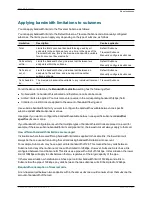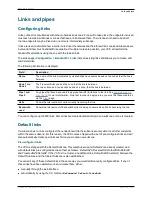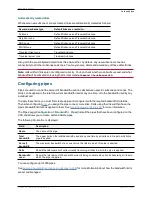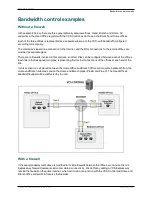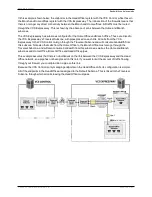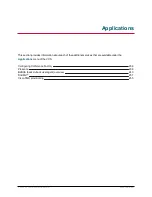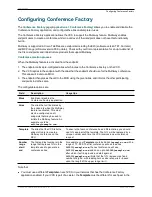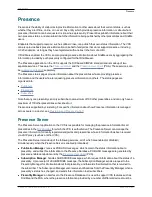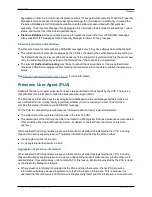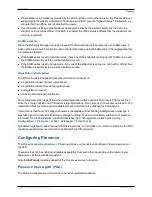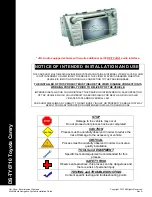
aggregated in order to provide an overall presence status for one particular presentity. When the Presentity
Manager receives a request from the subscription manager for information on a presentity, it queries the
Presence Database for all information available on all the endpoints associated with that particular
presentity. The Presentity Manager then aggregates this information to determine the presentity’s current
status, and returns this to the Subscription Manager.
n
Presence Database
: stores current presence information received in the form of PUBLISH messages.
Also sends NOTIFY messages to the Presentity Manager to inform it of any changes.
Presence and device authentication
The Presence Server accepts presence PUBLISH messages only if they have already been authenticated:
n
The authentication of presence messages by the VCS is controlled by the authentication policy setting on
the Default Subzone (or relevant alternative subzone) if the endpoint is registered (which is the usual case),
or by the authentication policy setting on the Default Zone if the endpoint is not registered.
n
The relevant
Authentication policy
must be set to either
Check credentials
or
Treat as authenticated
,
otherwise PUBLISH messages will fail, meaning that endpoints will not be able to publish their presence
status.
See
Presence and authentication policy [p.114]
for more information.
Presence User Agent (PUA)
Endpoints that do not support presence can have status published on their behalf by the VCS. The service
that publishes this information is called the Presence User Agent (PUA).
The PUA takes information from the local registration database and the call manager and determines, for
each endpoint that is currently locally registered, whether or not it is currently in a call. The PUA then
provides this status information via a PUBLISH message.
For the PUA to successfully provide presence information about a locally registered endpoint:
n
The endpoint must be registered with an alias in the form of a URI.
n
The domain part of the URI must be able to be routed to a SIP registrar that has a presence server enabled.
(This could be either the local Presence Server, if enabled, or another Presence Server on a remote
system.)
When enabled, the PUA generates presence information for all endpoints registered to the VCS, including
those which already support presence. The status information provided by the PUA is either:
n
online
(registered but not in a call)
n
in call
(registered and currently in a call)
Aggregation of presence information
When enabled, the PUA generates presence information for all endpoints registered to the VCS, including
those which already support presence. However, endpoints that support presence may provide other, more
detailed status, for example away or do not disturb. For this reason, information provided by the PUA is used
by the Presentity Manager as follows:
n
Where presence information is provided by the PUA and one other source, the non-PUA presence
information will always be used in preference to the PUA presence information. This is because it is
assumed that the other source of information is the presentity itself, and this information is more accurate.
Cisco VCS Administrator Guide (X8.1.1)
Page 239 of 507
Applications
Presence




